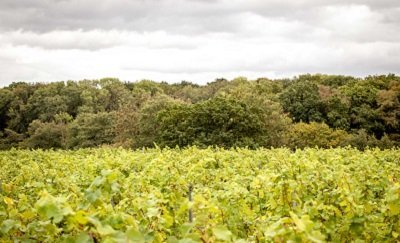BOOM TIME FOR BRITISH VINEYARDS
Published on 14 March 2019
12 March 2019 15:22 - 15:22
Latest figures from the UK wine industry detail a record-breaking harvest from last year, a doubling in sales both here and abroad and more land under vine than ever before. Further substantial growth is also predicted over the next two decades.
A survey of the UK wine industry, conducted by its national association, Wines of Great Britain (WineGB), in conjunction with data analysts Wine Intelligence, confirmed that last year a record-breaking 15.6 million bottles were produced, 130% higher than the previous year’s crop in 2017 and far exceeding the previous record of 6.3m bottles in 2014.
More production is forecast in the years to come due to the ongoing proliferation of vineyards across the country:
- Acreage has tripled since 2000
- Acreage grew 13% last year; 1.6 million vines were planted in 2018 amounting to over 1000 acres (405 hectares)
- A further 2 million vines are set to be planted this year, confirming the UK wine industry as one of the fastest-growing agricultural sectors in the UK
- Most of the acreage is now planted with Chardonnay, Pinot Noir, Pinot Meunier and Bacchus, which between them account for 76% of all plantings
With a recent academic study* suggesting that there are approximately 70,000 acres of highly suitable land in the UK that may be suitable for wine production, there remain opportunities for further expansion. Industry predictions are that at the current rate of growth, Great Britain will be heading for 40m annual bottle production in the next 20 years.
This bodes well for the rural economy, as vineyard numbers grow and with it their workforce. Currently 2000 people are employed within the industry, from vineyard workers to winemakers, administrative support and cellar door staff. Over the next 20 years the industry will create between 20,000 and 30,000 new jobs, showing not only the many future opportunities for labour creation and skills development in this sector but also providing a sizeable boost to the economy.
The arrival in recent years of two Champagne houses, Taittinger in Kent and Pommery in Hampshire, remains a firm endorsement for the future of the industry, and strikes a strong message of the investment potential in viticulture and winemaking in the UK.
Sales of English and Welsh wines doubled last year, which in the UK includes online, supermarkets, high street and independent retailers, restaurants and of course from the producers direct. Exports also doubled in 2018; the biggest export markets being USA and Scandinavia, which together receive 65% of total exports. WineGB expects that exports may account for 30-40% of the total wine produced in Great Britain by 2040, yielding a potential value of some £350m per annum.
The trend in sparkling wine production continues, accounting for 69% of wines produced. However, still red, white and rosé wines remain strong categories, seeing a marginal rise in its proportion of the overall production
Helping to drive growth is wine tourism, where there is a thriving scene in England and Wales offering an experience once reserved for trips overseas. Whilst most visitors are currently UK-based (some 86%), there are many opportunities to attract more inbound visits through export activity in key markets. This year, clusters of vineyards in the winelands of Britain are promoting their regions as go to places to visit, boosting the food, drink and hospitality industries across the country. Drawing on the experience of other established wine regions, by 2040 wine tourism in the UK could generate an additional revenue alone of £658m per annum.
Simon Robinson, Chairman of WineGB comments.
Our latest survey acknowledges 2018 as a milestone year for the industry. Our figures detail the considerable pace of growth taking place here in the UK and what exciting predictions and opportunities lie in the future. As a sector we are bringing many developments in agriculture, tourism, education, investment and employment. This is now a thriving and confident British industry in which we can be justifiably proud. Watch this space!
Learn more about our history
Since the original 400-acre College farm was bought back in 1919, Plumpton College has certainly seen a lot of changes.

Stay connected
Keep up to date with us online. Give us a like and follow us on:
















